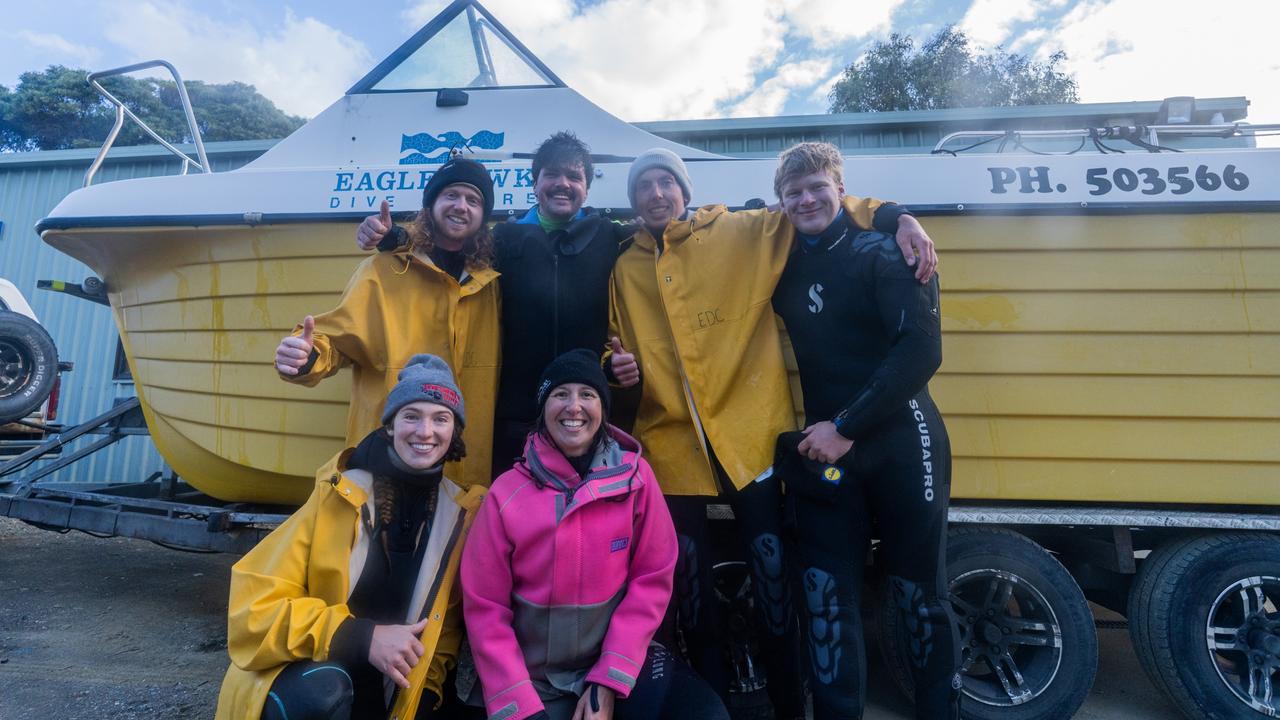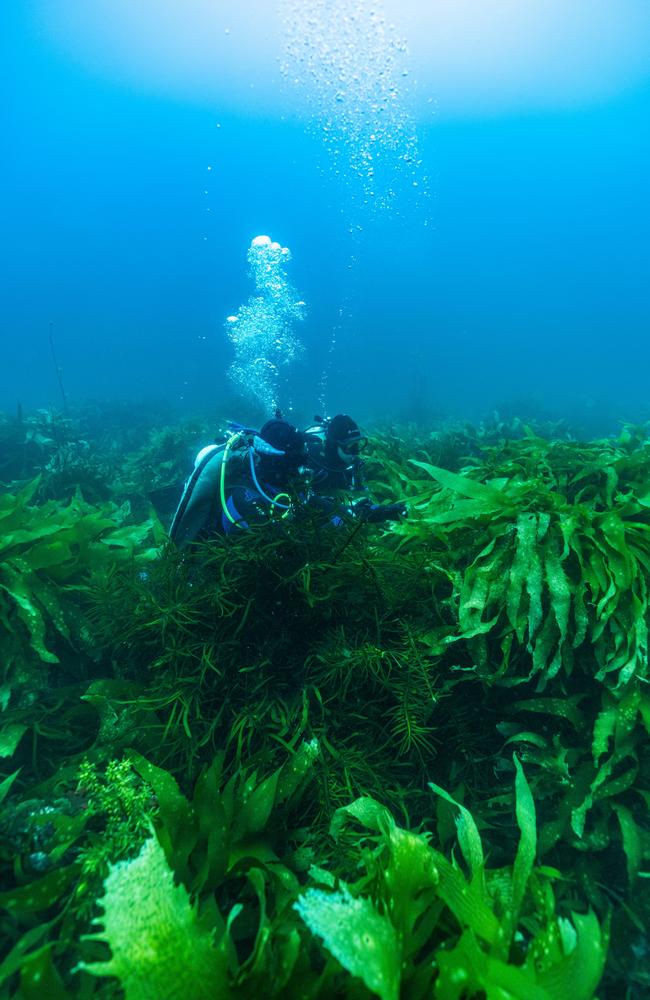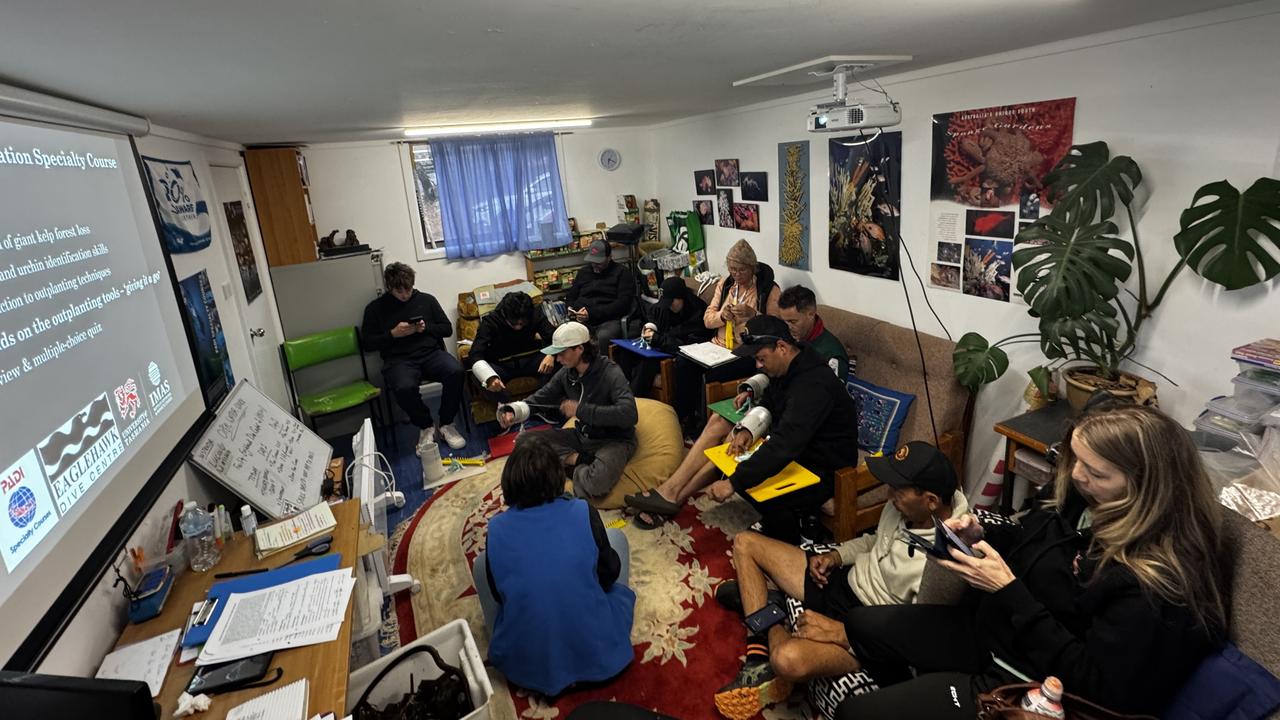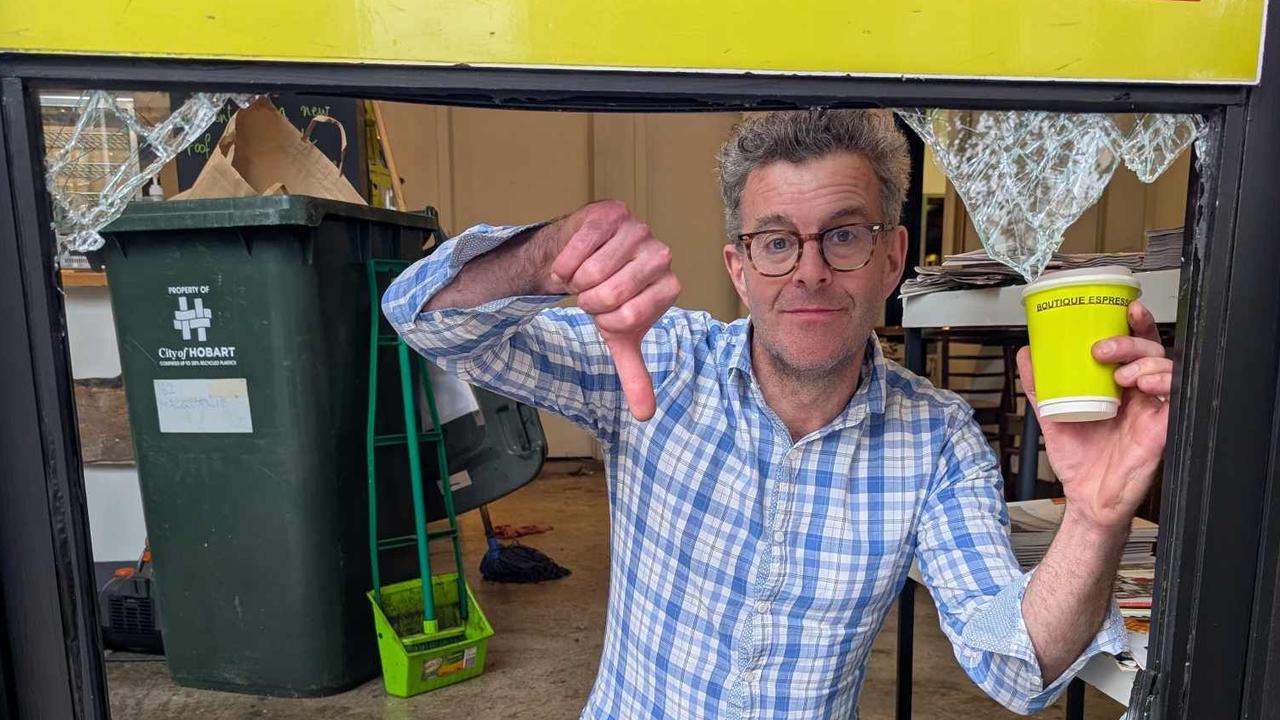Eaglehawk Dive Centre run course to save kelp forest
It doesn’t take a scientist to stop the rapid decline of kelp forest as a Tasmanian diving school chipping in to improve the sea environment.

Tasmania
Don't miss out on the headlines from Tasmania. Followed categories will be added to My News.
Commercial and beginner divers are helping to improve the health of Tasmanian reef ecosystems, as well as ensuring the future of endangered giant kelp forests through a diver training program, highlighted for Citizen Science month in April.
Eaglehawk Dive Centre has run on Tasmania’s southeast coast since 1991, and its employees have seen first-hand the decline of kelp forests, sometimes called the rainforests of the sea, in the areas they frequent.
According to Australian Government data, Tasmania’s giant kelp forests have declined by 95 per cent due to ocean warming and were listed as a Threatened Ecological Community in 2012 under national environment law.
The University of Tasmania’s Institute for Marine and Antarctic Studies (IMAS) ecologist and project leader Associate Professor Scott Ling put a call-out for community involvement in replanting kelp forests through a whole-of-reef-ecosystem restoration project.

“In our previous work, we’ve demonstrated we can regrow these underwater trees and even patches of forest,” Assoc. Prof. Ling said.
“But we are fast learning that, to grow the forests, we must grow human capacity and restoration industries.
“So we are taking a whole-of-reef ecosystem approach, utilising recent breakthroughs in kelp reseeding, and implementing the new understanding of local ecological conditions that enable giant kelp to thrive.”
But it was the work by instructors at Eaglehawk Dive Centre to develop a certified dive course for community members who wanted to help plant out the kelp forests that translated to more hands-on in the ocean project.

Eaglehawk Dive Centre instructor Pauline Mutton said the only thing required for the course is an open water level one diving certification.
“Our main objective is to plant as many kelp as we can on the different sites we have permits for,” she said.
“That’s why the course is designed to really focus on the dive specific to going to reef beds and the ability to do the planting, which is quite difficult in a wetsuit.”
The course, certified through the Professional Association of Diving Instructors (PADI), has churned out around 40 qualified divers for kelp planting, with Ms Mutton stating it “makes sense” to involve the community and citizen scientists in projects of international significance.
“The work we do as divers will be possible only if the ocean is healthy,” she said.
“Of course we would get on board to train people because we want as many people as possible helping to build this project and saving our oceans.”
“We hear from people, most of who are local, that either hear about kelp disappearing or witness it and for them it’s the chance to do something. They can make a difference.”
Originally published as Eaglehawk Dive Centre run course to save kelp forest







